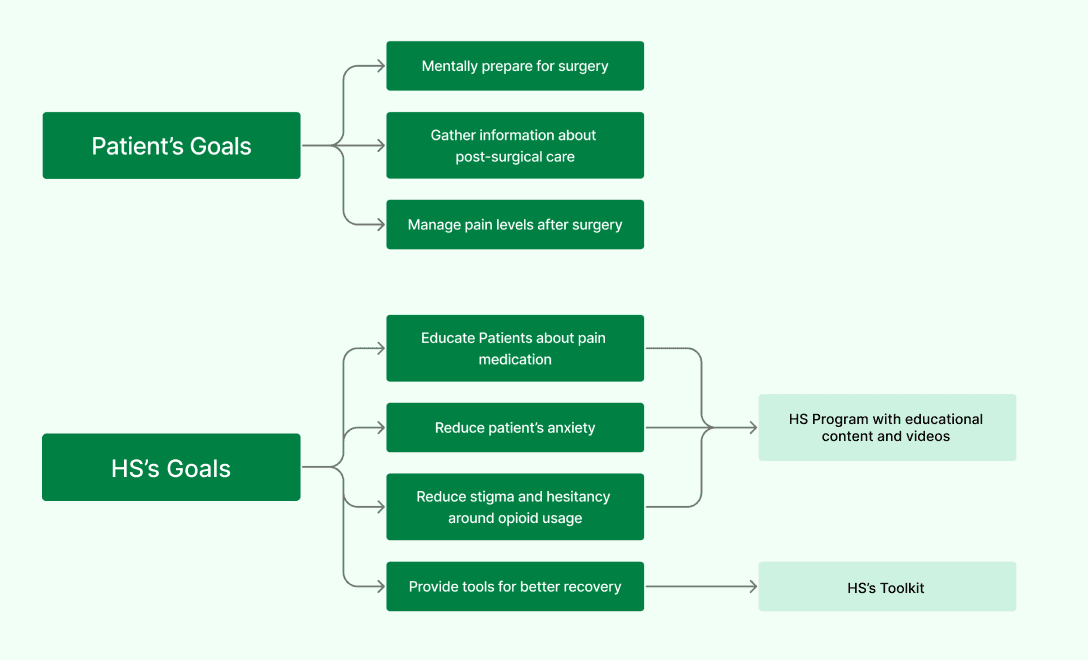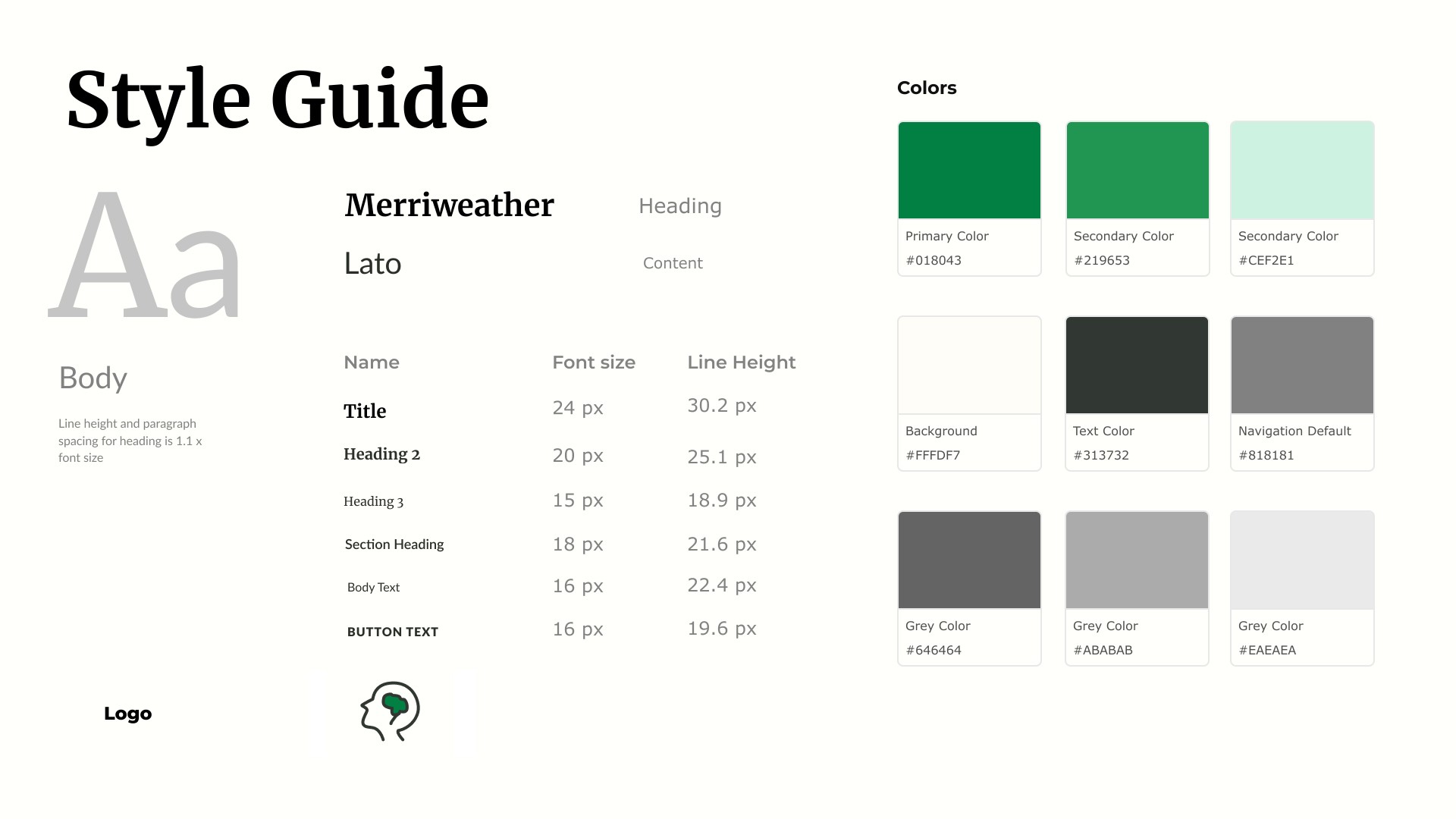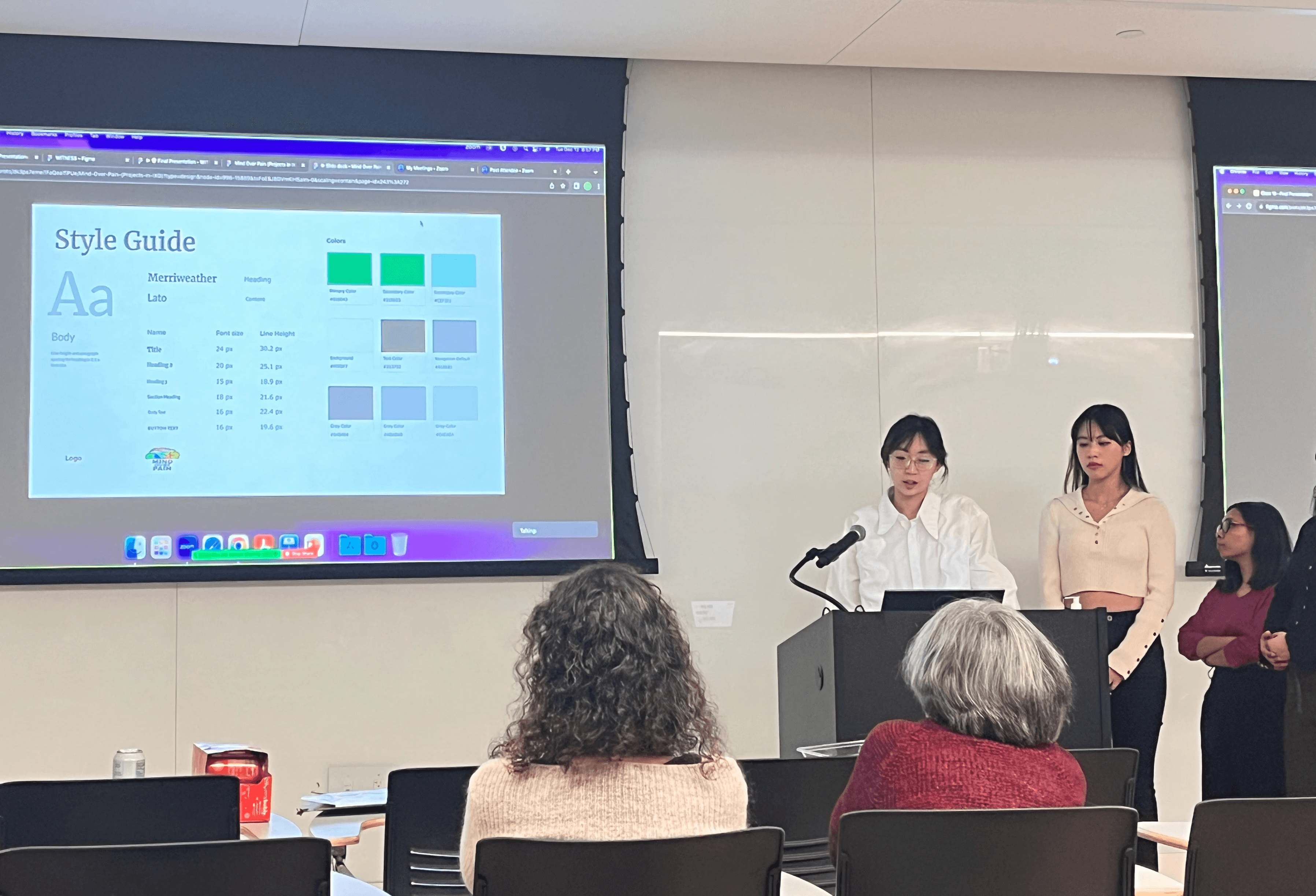HealSmart is a digital application combines evidence-based opioid misuse prevention strategies with positive psychology to enhance patient satisfaction and recovery throughout pre-surgical and post-surgical care.

My Contributions
As a UX Designer and researcher, I collaborated with three graduate students from Pratt Institute. I was fully involved in the complete user research process and conducted 3 user interviews. Hi-fi Prototype visual and interaction design, and finalizing design system.
Research: Questionnaire, User Interview, Competitive Analysis, Card Sorting, Tree Testing, Information Architecture, and Usability Testing.
Design: Wireframing, Prototyping, Design system, Interaction & Visual Design.
4 months, 2023.09
The Behavioral Health and Wellness Group
Miro /Figma /llustrator /Photoshop
Xinru, Nishi, Sayali, Roey
Developed by the Behavioral Health and Wellness Group, HealSmart is a digital tool to combat opioid misuse in response to the opioid epidemic and COVID-19 pandemic. This innovative program combines evidence-based prevention strategies with positive psychology to enhance pre-surgical and post-surgical care, improving patient satisfaction and recovery. HealSmart aims to reduce surgical complications, addiction risk, and healthcare costs while empowering patients with essential pain management skills and knowledge, decreasing reliance on healthcare providers during recovery.
Comprehensive Digital Content Completion:
Finalize comprehensive, user-friendly digital content for HealSmart.
HealSmart Mobile App Development:
Develop an accessible, intuitive, and engaging HealSmart mobile app.
Evidence-Based Prevention Strategies:
Implement evidence-based opioid prevention strategies with positive psychology and self-management skills.
Stigma and Risk Reduction:
Use digital learning to reduce stigma, mitigate prescription pill misuse risk, and enhance recovery outcomes.
Exploratory research is imperative for tailoring the tool effectively to its users. By understanding the unique needs, behaviors, and challenges of those facing opioid misuse—especially in the context of the opioid epidemic and COVID-19 pandemic—this research will ensure Heal Smart's features and strategies resonate deeply with its target audience.
Key Insights
After analysing the data we collected through our qualitative interviews with both doctors and patients, we created a persona to match the qualities of our target users. This persona then helped us create our designs and helped us stay focussed on the needs of the user.
The Product Architecture outlines our app’s components and interactions, ensuring it meets patients’ objectives and adapts to changes. It helps users find non-pill pain management methods, educates them on medication addiction, and provides tools for better recovery.
As a majority of our user group was slightly older (50+ years), we head to ensure that our information architecture was simple and easy to understand.
Goals:
Educate users and set expectations about their surgery.
Help patients manage their pain level through alternate activities than medication.
Fonts:
Titles: Merriweather font adds sophistication and emphasis to key elements.
Content: Lato font for its clarity and readability, ensuring seamless communication.
Colors:
Theme Color: Calming and trustworthy green was adopted as the theme color for the healthcare app.
Logo: Green is prominently featured in the company logo, ensuring a cohesive brand identity.
Diverse Login Options:
Provide multiple login methods (Google, Facebook, Apple ID) for easy and secure access.
Efficient Recovery Tracking:
Collect detailed surgery information to tailor and optimize patient recovery plans.
HealSmart Progress Tracking:
Provide easy access to program tracking and shortcuts to ComfortCare Kit functions for a seamless user experience.
Module Completion Indicator:
Use check marks to indicate completed modules, giving patients a clear sense of accomplishment.
Standardized Pre-Surgical Modules:
Use the ‘Medication Storage & Disposal’ section as a template for all pre-surgical modules for consistency and clarity.
Pain Level and Emotional Sharing:
Patients can share pain levels and emotional updates with their contacts, fostering support.
Customizable Recovery Goals:
Allow patients to set and track personalized recovery objectives tailored to their needs.
Gratitude Journal Calendar:
Patients can review past entries via a calendar, enhancing reflection on positive moments.
Medication Reminder:
Integrate medication tracking with timely reminders for consistent adherence.
Flexible Music Therapy :
Allow users to choose their preferred platform for music playback in the therapy module.









